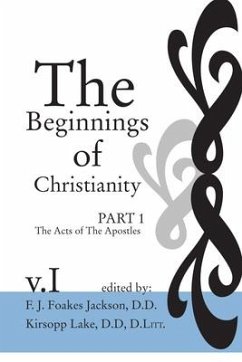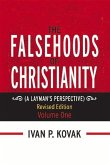As its title implies, "The Keystone Events of Christianity Unscrambled" uncovers evidence that the transcription of the New Testament canon from Hebrew to Greek contained hostile, self-serving contortions of the genuine ministry of Jesus. Why the New Testament canon was methodically corrupted during transcription and by whom becomes clear in chapter 1: Roman impersonators of Philo Judaeus hijacked the ministry of Jesus to glorify themselves and to justify mistreating the genuine Jewish messengers. In chapter 2, the theme turns toward providing justification for launching a crusade to retract the creeds and anathemas of yesterday's Roman Catholic Church in favor of the monotheistic Christianity preached by the iconoclast Jesus. Of particular interest to Torchbearers, chapter 3 depicts authentic Christianity as an Islamic religion and Jesus as a practitioner of Islam. Along the theme that Jesus and the Prophet Muhammad were both iconoclastic and led similar monotheistic ministries, the argument is presented that Islam reaches its apex form as submission to the judgments of the Lord. Chapter 4 contrasts the inadequacies of the polytheistic ministries of self-glorifying icons, like Uncle Abu Lahab and Philo's impersonators, against the advantages of the monotheistic ministries of the iconoclasts, Jesus and Muhammad. Turning the perennial battle against the polytheism of self-glorifying icons and in the favor of monotheistic iconoclasts is the theme of chapter 5. Highlighted by a less-than-elegant portrayal of the life of the Virgin Mary, chapter 6 depicts the vacuous underdevelopment of all of us, while under the dominion of self-glorifying icons. The heavily concerted ministries of Philo Judaeus and Uncle Abu Lahab are contrasted in chapter 7 against the marginally developed ministry of Jesus. Chapter 8 develops the theme that fulfillment of the mission of Christianity intimately depends on ubiquitous experience of the pattern that led Jesus to inseminate the pearl among rights. Tying into the book's main theme that the correctly ordered keystone events of Christianity reveal the Lord's plan of salvation, the culminating chapter advances arguments for our chosen generation to venture toward balancing the scales of justice, through bringing systemic forgiveness and a path to mutual redemption into the equation.
Hinweis: Dieser Artikel kann nur an eine deutsche Lieferadresse ausgeliefert werden.
Hinweis: Dieser Artikel kann nur an eine deutsche Lieferadresse ausgeliefert werden.








